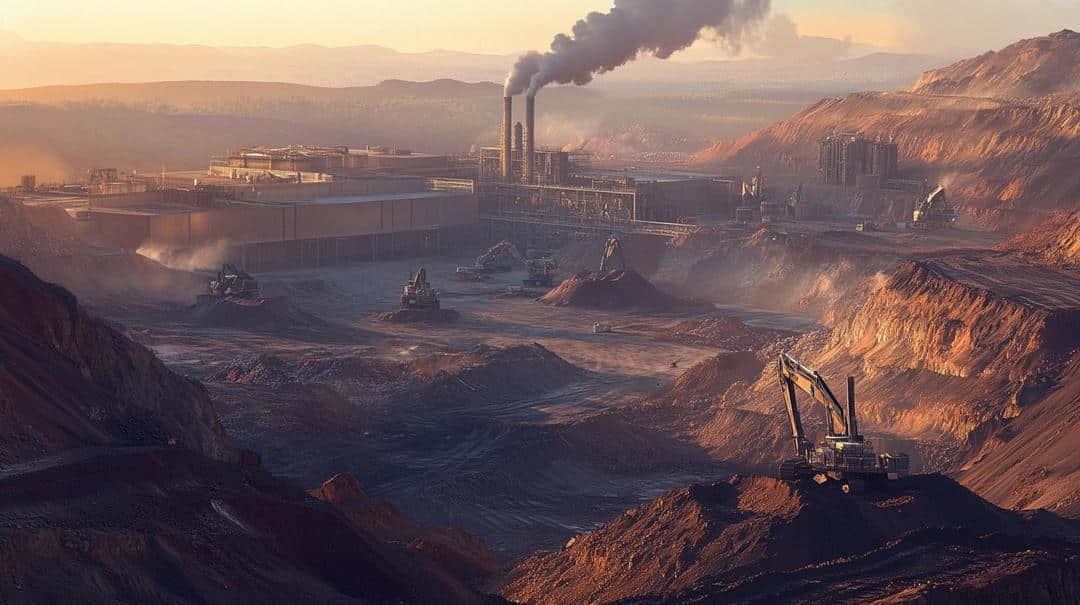Imagine a world without smartphones, wind turbines, or electric vehicles. It’s not that hard; we still have entire generations of people who grew up in a world without these things. And they don’t want to go back. These older generations are driving the companies that procure and/or rely on rare earth elements.
The rare earth supply chain is one of the most complex and risky in global commerce. Did you know China controls nearly 70% of global rare earth production? That’s a geopolitical headache many countries are realizing they already have!
In this guide, we’ll uncover the nuts and bolts of the rare earth supply chain, explain why it’s fraught with so many challenges, and give you insights into emerging trends and innovations.
Let’s dig in!
What's Inside
What Is A Rare Earth Supply Chain Guide?
Rare earth elements (REEs) are a group of 17 metallic elements critical to modern technology and industrial processes. These elements play a pivotal role in numerous high-tech applications that drive our current technological landscape.
Critical Applications of Rare Earth Elements
REEs are essential in various cutting-edge industries:
- Advanced battery technologies
- Powerful permanent magnets
- Renewable energy systems
- Defense and military equipment
- Electronics and communication devices
The supply chain for these elements involves complex processes from extraction to final product integration. Unlike many other minerals, rare earth elements are nearly irreplaceable in many high-performance applications, making their procurement strategically crucial.
Breaking Down the Rare Earth Supply Chain: Key Steps and Global Players
The Supply Chain Journey
The rare earth element supply chain consists of several critical stages:
Mining Phase
- Primary extraction locations include:
- China (global leader)
- United States
- Australia
- Myanmar
- Brazil
Refining Process
- Separation of usable elements from raw ore
- Highly resource-intensive
- Predominantly controlled by Chinese processing facilities
Manufacturing Stage
- Integration of rare earth elements into final products
- Critical for industries like:
- Electric vehicle manufacturing
- Wind turbine production
- Advanced electronics
- Defense technology
Global Production Landscape
China currently dominates the rare earth element market, controlling approximately 80% of global production and processing capabilities. This concentration presents significant geopolitical and economic challenges for other nations seeking to develop independent supply chains.
What Are the Challenges Facing Rare Earth Element Procurement?
Environmental Concerns
- Extensive energy consumption during extraction
- Significant water resource requirements
- Substantial environmental degradation
- Generation of toxic waste
- Landscape disruption from mining activities
Economic Barriers
- High production costs
- Dependence on specialized technological processes
- Significant initial investment requirements
- Complex separation and refinement techniques
Geopolitical Complexities
- Chinese market monopoly
- Potential export restrictions
- Vulnerability to international trade tensions
- Strategic implications for global technology industries
Geopolitical Risks and Supply Chain Dependencies
Global Strategic Positioning
- Rare earth elements as critical negotiation tools
- Potential for market manipulation
- Price volatility risks
National Strategies for Diversification
- United States initiatives:
- MP Materials in California
- Domestic production incentives
- European Union development programs
- Australian mining expansion efforts
How Are Regulations and Policies Shaping the Rare Earth Supply Chain?
Regulatory Frameworks
- International trade regulations
- Environmental protection standards
- Ethical sourcing requirements
- Government incentive programs for domestic production
Sustainable Development Approaches
- Emphasis on environmentally responsible mining
- Increased transparency in supply chain processes
- Encouragement of circular economy principles
Emerging Trends and Possible Solutions
Innovative Approaches
- Advanced rare earth element recycling
- Development of alternative material technologies
- Reduced rare earth dependency in manufacturing
- AI-powered supply chain optimization
Strategic Developments
- Domestic supply chain expansion
- International collaborative partnerships
- Technological innovations reducing rare earth dependencies
Why the Rare Earth Supply Chain Is Crucial for a Sustainable Future
The rare earth element supply chain represents a critical infrastructure for global technological advancement. As renewable energy and advanced technologies continue to evolve, strategic management of these resources becomes increasingly important.
Balancing environmental considerations, technological innovation, and geopolitical realities will be key to developing a sustainable and resilient rare earth element ecosystem.
Conclusion
The rare earth supply chain is both a cornerstone of modern industry and a ticking time bomb of challenges. From environmental concerns and geopolitical risks to intense dependencies on a few countries, understanding the complexities of this vital system is no longer optional—it’s imperative.
As industries grow more reliant on technological advancement and governments push for cleaner energy transitions, finding innovative and sustainable solutions is paramount.
By diversifying supply, advancing recycling technologies, and crafting smarter policies, there’s hope for a more secure and resilient rare earth ecosystem.


Dustin
Driven by a fascination with rare earth elements and their role in powering modern tech and engineering marvels. A true car and tech enthusiast, he loves exploring how these hidden heroes fuel our most exciting innovations.
You Might Also Like…